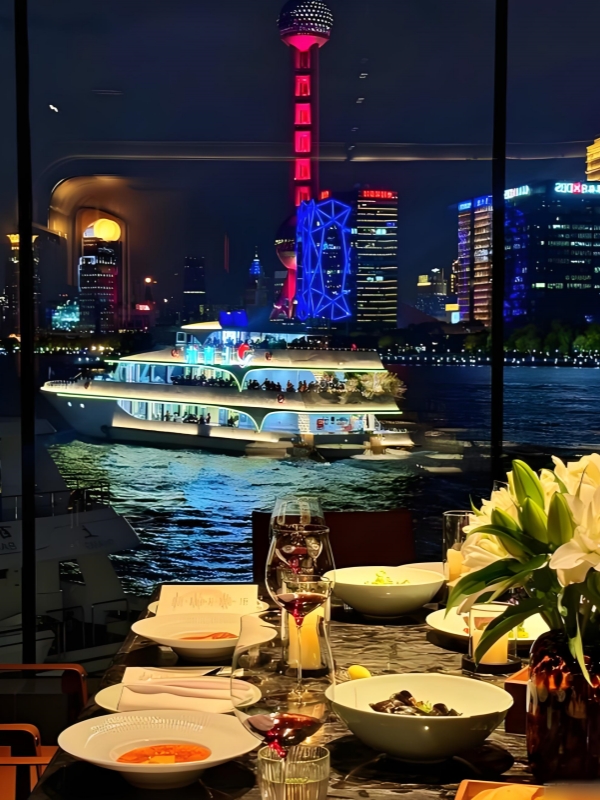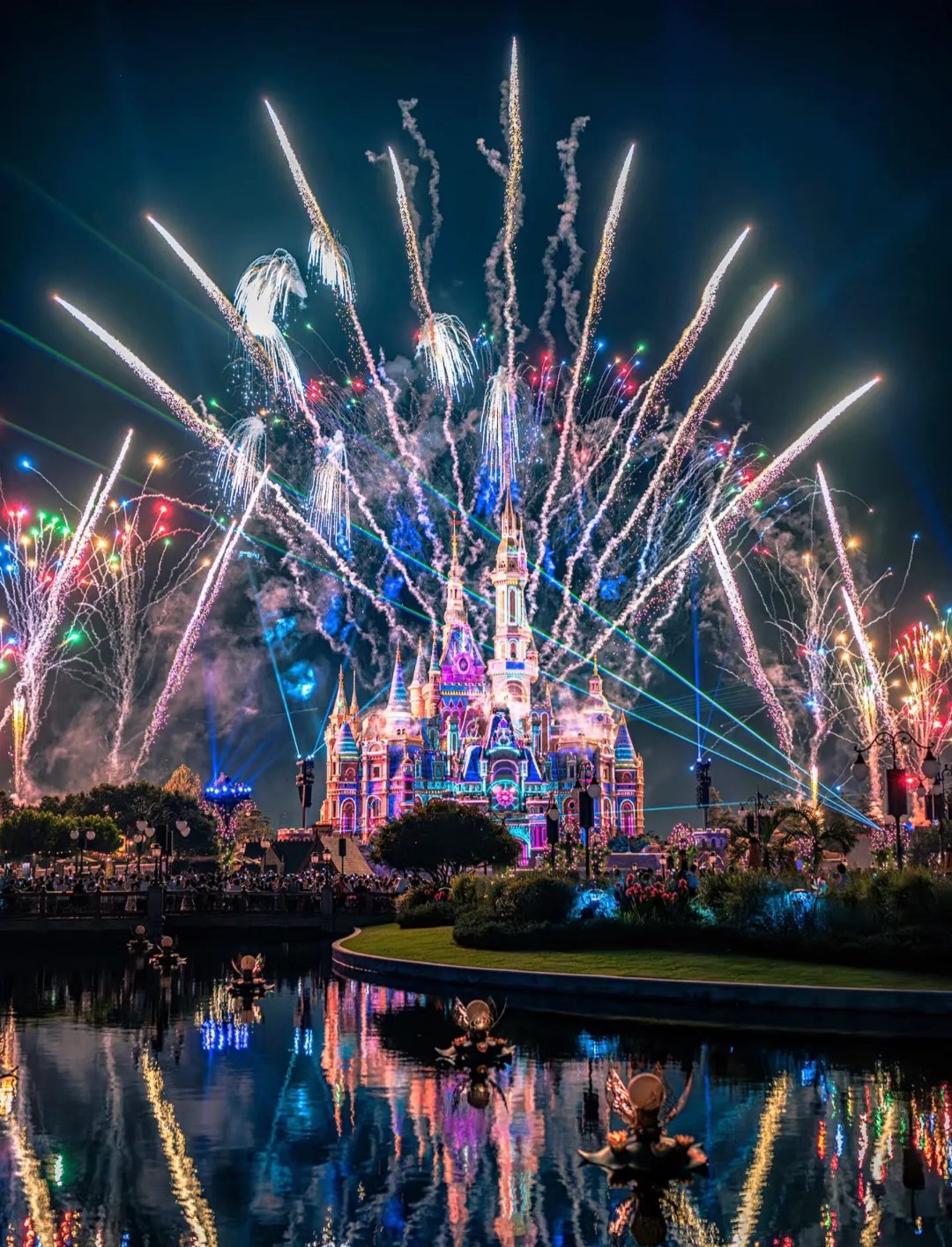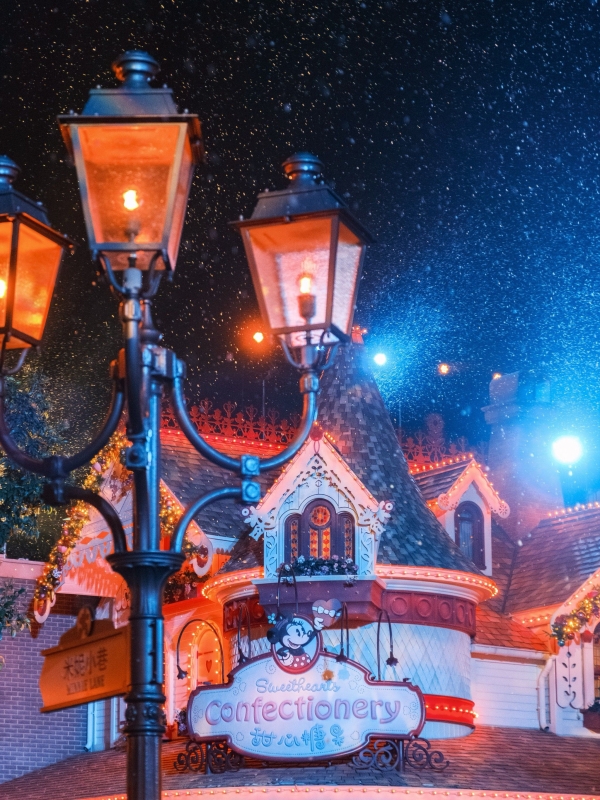Going to Shanghai and concerned you will only see skyscrapers and no traces of the "Old Shanghai"? Scared of too-commercialized “fake ancient buildings” and worried about missing real landmarks? Shanghai’s past isn’t a faded memory but can be found swimming in the koi ponds of Yu Garden, carved into The Bund’s facades, ascending with incense flies at Longhua Temple and flapping on drying lines throughout Shikumen lanes. You can follow Ming and Qing garden aesthetics, feel East-West blend in the Republican era, or track the currents of literary thought. Shanghai-Bringing Faith & Culture Here history in the city Expresses Grounded, faith and daily life are blended at historical sites in Shanghai-history uniting with now. Then we’ll recommend must-see sites, and tell you their stories with useful travel information, for a vivid experience in Shanghai’s history without dullness or awkwardness.
Explore Icons: International and Architectural
The Bund
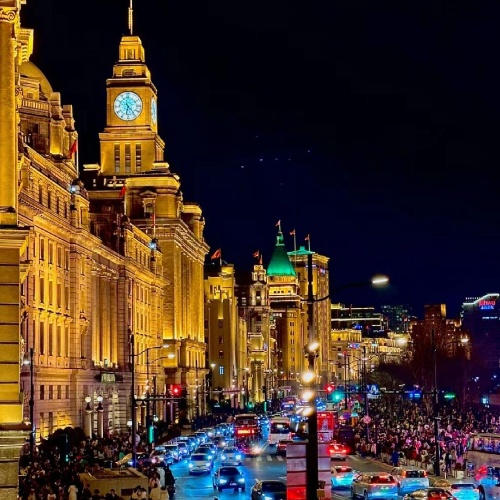
The Bund
In shanghai, the Bund reveals Shanghai’s transformation into a global center. Gothic arches bump up against neoclassical and Art Deco motifs of the 1930s. These buildings have stories to tell, of bankers, diplomats and adventuress. I stood at sunset and saw stone facades aglow with Pudong’s towers alight. It was one of those moments when history meets the future. The Bund The most popular historical sites in Shanghai.
At each step there’s another style: domes from European traders, baroque flourishes from consulates, ornate carvings. Locals walking as if history seeped into their daily lives. Tourists lift up cameras not only to take photos of the skyline but also their place in this instant narrative. Walking here is like flipping through a photo album of Shanghai’s former self. Atmosphere by the river is lovely and a special treat each time we come.
Quick Facts: The Bund at a Glance
🏛️ Type: Historic waterfront & architectural cluster
⏰ Opening Hours: Open all day
🎫 Ticket: Free
🕒 Suggested Visit Time: 1–2 hours
📍 Address: Zhongshan East 1st Road, Huangpu District, Shanghai
Fascinated by China’s deep historical roots? Visit 13 Guangzhou Historical Sites: From Ancient Temples, Colonial Architecture to Cultural Heritage to wander through Guangzhou’s living history.
Broadway Mansions
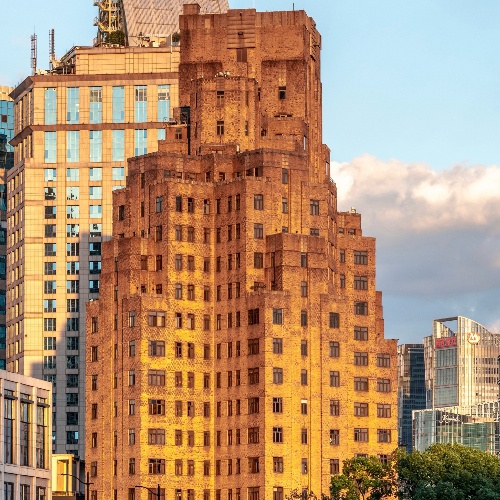
Broadway Mansions
At the Bund’s northern tip, Broadway Mansions soars with striking Art Deco lines. Constructed in 1934, it was Asia’s tallest building at one time. Its symmetry was an echo of Shanghai’s push toward modernity. I went inside and the marble floors and brass flourishes threw me back to the 1930s. It was as if I had walked into a movie set. Broadway Mansions is one of the historical sites in Shanghai.
The building is a repository of diplomacy and ambition. Diplomats toasted agreements, journalists argued and explorers plotted journeys. And for many what the place conjures is a sense of New York’s golden age. Outside, I felt the city’s international spirit concentrated in one building. If architecture is your thing, Broadway Mansions is a testament to Shanghai’s 20th-century heartbeat. The grandeur is enhanced by the fact that it sits on the river.
Quick Facts: Broadway Mansions at a Glance
🌆 Type: Art Deco landmark building
⏰ Opening Hours: Exterior view anytime (hotel access varies)
🎫 Ticket: Free
🕒 Suggested Visit Time: 30 min–1 hour
📍 Address: 20 North Suzhou Road, beside Waibaidu Bridge, Shanghai
Astor House Hotel
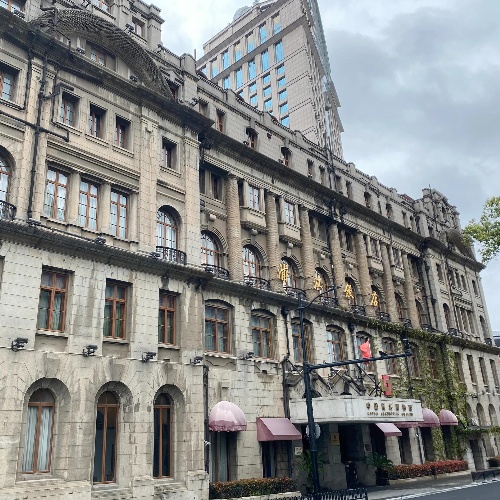
Astor House Hotel
Along the Bund area around Waibaidu bridge, visitors will also find old classic buildings such as the Astor House Hotel from 1846. “It was China’s first Western-style hotel, where merchants and travelers stayed. Its neoclassical façade and baroque interiors conveyed elegance and audacity. Walking inside, I pictured Einstein and Chaplin pacing up the corridors. Astor House is one of most historical sites in Shanghai.
The Astor House is detail married to legacy. Chandeliers that once illuminated music and political debate. Visitors gaze in wonder at staircases, domes and polished floors the influence of which owed everything to European chic. I stopped at the entrance, as part of an epic tale of global exchange. Visiting is about more than design; it’s people and places. The silent charm of its halls stands in stark contrast to the noise outside.
Quick Facts: Astor House Hotel at a Glance:
🏨 Type: Historic hotel with neoclassical style
⏰ Opening Hours: Lobby & exhibition areas approx. 09:00–18:00 (subject to change)
🎫 Ticket: Free
🕒 Suggested Visit Time: Around 1 hour
📍 Address: 15 Huangpu Road, north end of the Bund, Shanghai
Looking for timeless stops beyond the guidebooks? Check China Historical Sites That Tell the Story of a Civilization
Discover Heritage: Classical Chinese Sites
Yu Garden
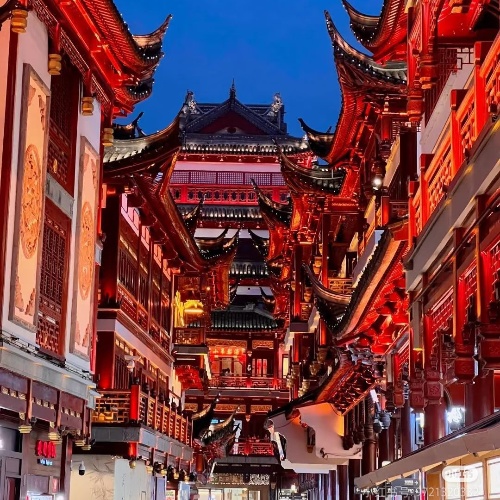
Yu Garden
And the Yu Garden, is a sanctuary away from Pudong’s towers. Ming craftsmanship is reflected in the carved screens and lattice windows. I reached for cool stone rails and stopped beneath a dragon roofline, the radials immersive, every twist guided with meaning. The koi ponds glinted and muted street noise. For travelers, Yu Garden is one of the most picturesque historical sites in Shanghai. To visit Yu Garden is to see tradition serving as the rock on which modernity is built.
It was the kind of place that looked as though it had been made for reflection around every corner. It was full of pavilions which framed rockeries the way paintings did, and winding corridors that slowed me down. Windows with designs representing peace or wealth catch the eyes of visitors. I sat by a moon gate, watching local people sip tea at the Hare and Lily tea house. For that moment the restless city gave me peace. History and respite can still be found in the garden. Yu Garden allows visitors to get a sense of hundreds of years worth of cultural minutiae.
Quick Facts: Yu Garden at a Glance:
🌸 Type: Ming Dynasty classical garden
⏰ Opening Hours: 08:30–17:00
🎫 Ticket: 40 RMB (low season) / 50 RMB (high season)
🕒 Suggested Visit Time: 1–2 hours
📍 Address: 137 Anren Street, Huangpu District, Shanghai
Longhua Temple
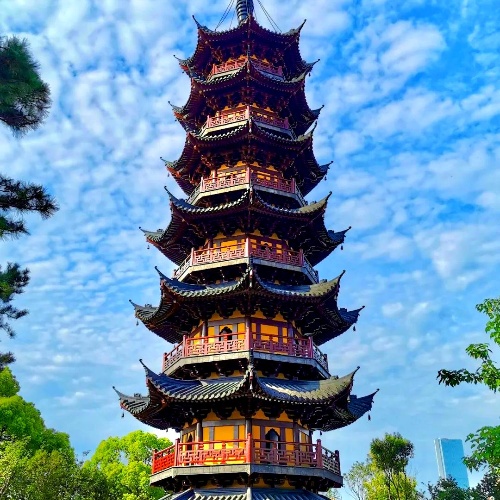
Longhua Temple
The Longhua Temple welcomes you with the hum of monks and wafting incense. Its history is as old as a millennium — and yet a tall pagoda stands serene next to the skyline. And I heard the echo of temple bells, which brought down in numbing rapidity. Beneath lanterns, walking, I held to earth. Temples Longhua Temple is regarded as one of the more solemn historical sites in Shanghai. The temple is a reminder of Shanghai’s strong ties to Buddhist tradition.
Each detail tells faith’s story. Gilded statues gleam in halls, as prayer ribbons flutter outside. Tourists admire the pagoda, but what struck me was the piety and genuine devotion of locals bowing. That silence, it allowed me time to think.” The temple offers moments of peace in the midst of a bustling city. Longhua Temple maintains the harmony of faith and life.
🏯 Just like Longhua Temple, Jing’an Temple holds its own iconic place in the city’s spiritual map.
Quick Facts: Longhua Temple at a Glance:
🌸 Type: Ancient Buddhist temple complex
⏰ Opening Hours: 07:00–16:30
🎫 Ticket: 10 RMB
🕒 Suggested Visit Time: 1–1.5 hours
📍 Address: 2853 Longhua Road, Xuhui District, Shanghai
Chenxiang Pavilion
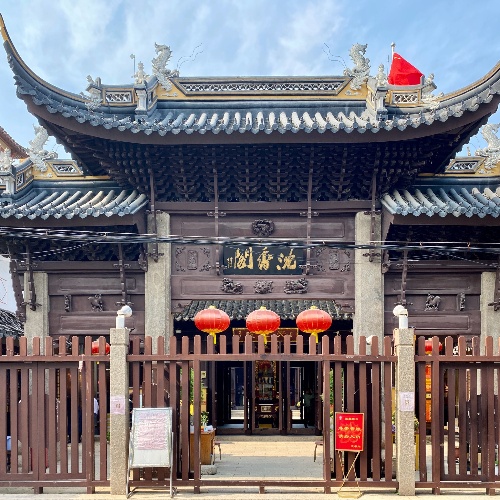
Chenxiang Pavilion
Sequestered in a busy lane, Chenxiang Pavilion, still is it incense-scented before even reaching here. Constructed during the Ming dynasty, it retains worship rhythms that continue today. I lit incense, puffs of smoke carrying wishes into the sky. Carved beams echoed with prayers. Chenxiang Pavilion remains one of the cosy historical spot in Shanghai. The pavilion preserves a quieter aspect of Shanghai’s religious history.
It feels personal, compared to the grander temples. Offerings flicker at coffee-scented altars, while vistors bow respectfully. I stood in a soft haze of incense, part guest, part participant. It was a moment that connected an unbroken line of loyalty through the centuries. The pavilion provides a quiet space to reflect, well removed from the city hustle and bustle. Chenxiang Pavilion affords travelers an opportunity to see this ancient tradition at its daily celebration.
Quick Facts: Chenxiang Pavilion at a Glance:
🙏 Type: Historic Buddhist sanctuary
⏰ Opening Hours: 08:00–16:30
🎫 Ticket: 10 RMB
🕒 Suggested Visit Time: 30–60 min
📍 Address: 29 Chenxiang Lane, near Fangbang Middle Road, Huangpu District, Shanghai
Curious where history meets sand dunes? Explore Top 7 Dunhuang China Historical Sites to Visit in 2025
Recall Memory: Hidden Cultural Corners
Duolun Road
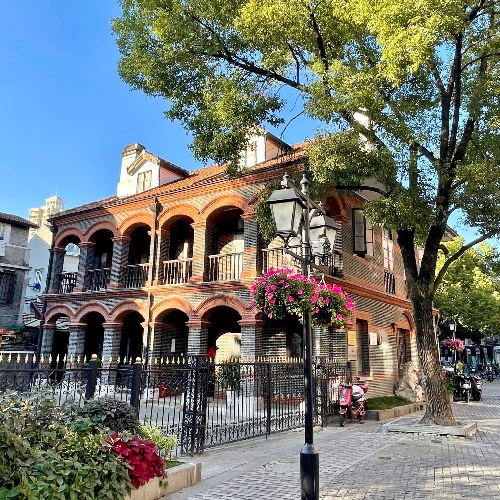
Duolun Road
Itŕs nice to spend time here on Duolun Road, a walk amid what feels like a cultural my-scanner.capital. The cobblestone walkways are clotheslined with houses where writers once argued and composed. I stopped outside a villa where literary folk once billeted and dreamed of talk reverberating from balconies. Its quiet was a world away from the pulsing rush of this city, almost like talking to the past. Duolun Road Today, Duolun is considered one of the most atmospheric historic sites to visit in Shanghai.
Bronze statues of Lu Xun and other thinkers line the road, encouraging contemplation. I sat alone by a tree once, soaking in the feeling of being surrounded by thinkers. For literature-loving travelers, Duolun Road is not just a street. It provides an opportunity to walk in the spirit of Shanghai’s writers who once dreamed of change.
Quick Facts: Duolun Road at a Glance:
📖 Type: Historic street of writers and thinkers
⏰ Opening Hours: Open all day
🎫 Ticket: Free
🕒 Suggested Visit Time: 1–2 hours
📍 Address: Duolun Road, Hongkou District, Shanghai
Shanghai Postal Museum
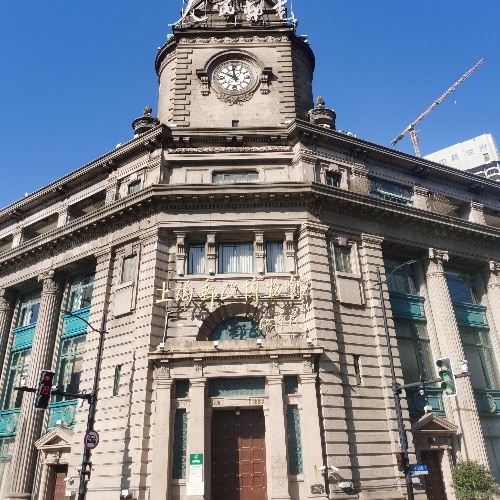
Shanghai Postal Museum
The neoclassical-pillared Shanghai Postal Museum explains how critical communication was to trade. Inside, galleries exhibit stamps and letters, and antique delivery systems that linked Shanghai to the outside world. I stood before a postal map and learned that the city had served as both shipyard and nerve center of telegrams. The polished counters and brass mailboxes sparkled, conjuring an era when handwritten missives had more significance. This museum displays the international significance of historical sites in Shanghai.
These artifacts connect Shanghai’s story to broader networks. Displays of telegram machines and airmail services illustrated how commerce advanced with innovation. I stood by a wall of rare stamps, each one with the voices of diplomacy and daily life within it. For visitors who want to dig a bit deeper into their history books than monuments, the Postal Museum offers insight into how identity was made.
Quick Facts: Shanghai Postal Museum at a Glance:
📬 Type: Legacy of communication and trade
⏰ Opening Hours: 09:00–17:00 (closed Mon)
🎫 Ticket: Free
🕒 Suggested Visit Time: 1–1.5 hours
📍 Address: 395 Tiantong Road, Hongkou District, Shanghai
Lu Xun Park and Memorial
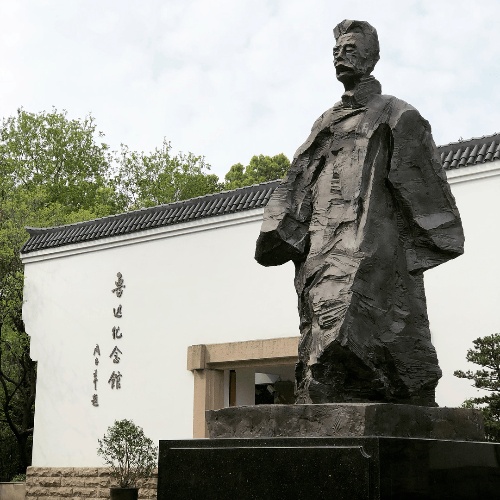
Lu Xun Park and Memorial
The Lu Xun Park, a leafy space where history and identity converge. Pathways lead to the memorial of Lu Xun, one of China’s foremost authors. I was standing before his manuscripts, inscribed in bold strokes that once set off toward readers. (Still, the air was thick with reflection but humming with students reading his works. This disparity is what sets it apart from other historical sites in Shanghai.
What touched me most was the sense of connection. Families ate picnics while young readers copied quotes into their notebooks, creating a living memorial. The silent hall, deserted in contrast with the laughter outside it, demonstrates how Lu Xun’s influence trickles into daily routines. For visitors in search of some depth, the park promises as much beauty as meaning.
Quick Facts: Lu Xun Park at a Glance:
🌳 Type: Memorial of a modern intellectual
⏰ Opening Hours: Park 05:00–21:00; Memorial 09:00–16:00 (closed Mon)
🎫 Ticket: Free
🕒 Suggested Visit Time: 1–2 hours
📍 Address: 2288 Sichuan North Road, Hongkou District, Shanghai
Wondering which landmarks hold real stories? Check Best 7 Beijing Historical Sites to Walk Through Centuries of History
Experience Life: Everyday and Living History
City God Temple
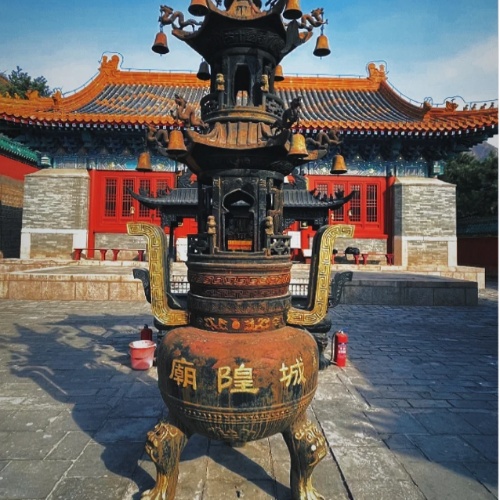
City God Temple
The City God Temple hums with devotion and the daily busyness of life. Red paper lanterns sway over incense-bearing worshippers, and food stalls nearby waft the scent of dumplings. I stood at the entrance and witnessed locals prostrating themselves before going off to buy snacks. Bells clashed against the sound of children’s laughter, conjoining sacred with routine existence. Such coordination is what makes it one of the most lively historical sites to visit in Shanghai.
The thing that got me the most was the strange combination of rituals and casual encounters. I once purchased candied hawthorn right after seeing a monk light candles. The juxtaposition seemed both organic and harmonious. For visitors, the City God Temple is more than just a landmark — it is where belief and community intersect.
Quick Facts: City God Temple at a Glance:
🙏 Type: Tradition, belief, and community life
⏰ Opening Hours: 08:30–16:30
🎫 Ticket: 10 RMB
🕒 Suggested Visit Time: 1 hour
📍 Address: 249 Fangbang Middle Road, Huangpu District, Shanghai
Shikumen Houses
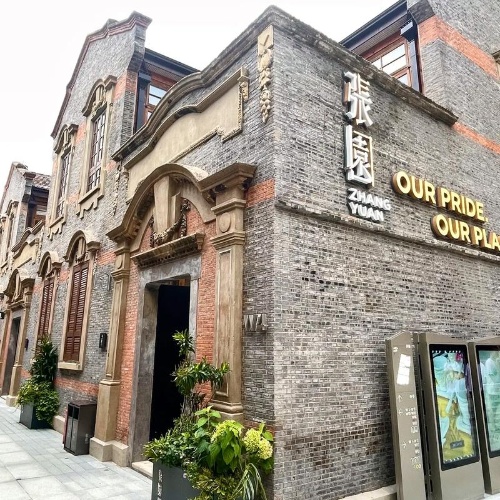
Shikumen Houses
Strolling in Shikumen lanes is like observing the rhythm of old Shanghai. Narrow alleyways connect stone-gated houses with laundry hanging overhead and bicycles leaning on the walls. I could smell the wafting aromas of soy sauce from a neighbor’s kitchen and hear children’s toys squeaking. The life here is immediate and real. For a lot of travelers, Shikumen is one of the best preserved historical sites in Shanghai.
The proximity is what makes the show unforgettable. Brick arches outline each alley, and wooden doors bear the patina of countless hands. I could admire old nameplates that tell the story of families who long lived here. Travelers are always looking for real, and at Shikumen it is genuine without trying too hard.
Quick Facts: Shikumen Houses at a Glance:
🏘️ Type: Historic lanes of local families
⏰ Opening Hours: Exterior view all day
🎫 Ticket: Free (some museums charge 20–30 RMB)
🕒 Suggested Visit Time: 1–2 hours
📍 Address: Found in areas like Tianzifang and Xintiandi, Huangpu District, Shanghai
Qibao Ancient Town
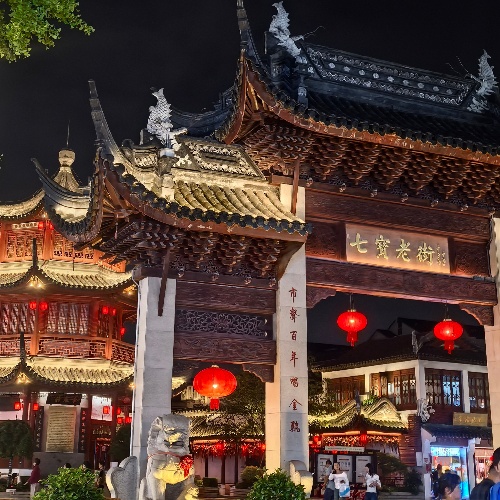
Qibao Ancient Town
The Qibao Ancient Town seems like a living museum, with its canals, bridges and stalls decorated with lanterns. I was standing on a bridge watching the boats glide, their oars stirring up ripples that echoed centuries’ worth of commerce: Diamond trade by way of Cherbourg. The air smelled of fried cakes here, and herbal teas, still popular recipes today. Roaming through the narrow lanes, I had a sense of history come to life. Qibao is considered to be one of the city's most atmospheric historical sites in shanghai.
What lingered was how traditions persist in daily life here. Villagers watched folk shows as shopkeepers peddled calligraphy outside old halls. I attended a shadow puppet play before an audience — many of whom were in burqas and niqabs — and the applause was that of the very long ago. Qibao is not touristsim slicked up and shellacked, it’s immersion into continuity and heritage.
Quick Facts: Qibao Ancient Town at a Glance:
🌉 Type: Old waterways and timeworn streets
⏰ Opening Hours: 09:00–17:00
🎫 Ticket: Free for town; 5–20 RMB for individual attractions
🕒 Suggested Visit Time: 2–3 hours
📍 Address: Qibao Town, Minhang District, Shanghai
Practical Tips for Exploring Shanghai’s Past
Travel and Access
Have your movements planned out clearly, because Shanghai’s metro caters most major areas. MetroMan or Baidu Maps for less scruffy routes and English. Have your transport card or mobile payment app preloaded to skip long ticket lines. And for longer trips, ride-hailing apps like Didi offer comfort and flexibility. As always, check the opening hours from trustworthy sources like CTrip or official museum websites. Whenever you can, purchase your tickets online to avoid queues and receive discounts. Save small bills for tiny vendors or quick temple offerings, as not all places will take cards.
Wondering which brands meet 3C standards? See Top 3C Certified Power Banks to Buy in 2025: Travel-Ready and Globally Approved
Preparation and Etiquette
Pack intelligently and be respectful of local customs to avoid having trouble getting into the places you visit. Bring a power bank which is available for sale and use in China (3C certified), navigation apps and translation apps cause fast drainage of your phone battery. Dress appropriately when visiting temples or heritage houses. Commit a few basic Mandarin phrases like “xiexie” (thank you) or “duoshao” (how much) to memory and this will ease interaction. Download offline translation apps like Pleco or Google translate for comprehensive meanings. Photography photography : Respect photo rules; look for signs before taking photos. But do not keep your valued things too open when walking in crowded bazaars or small alleys, because chances of loosing valuables are very much possible.
Enhancing Comfort and Experience
Strike a balance between sightseeing and comfort, to make your travel feel pleasant. Begin early in the day to avoid thick crowds, and pause at shaded gardens or nearby cafes. Bring bottled water, as walking from site to site can be exhausting — especially in the summer. Pack tissue paper and hand sanitizer, because some public toilets have no supplies. Opt for audio guides or local tourist guides to gain more in depth understanding while visiting heritage sites. Base meals on visits: Street vendors sell dishes close to many of the sights. With thoughtful planning, each trip is organized, fun and stress free.
FAQs on Visiting Historical Sites in Shanghai
Q: When is the best time of year to visit historical sites?
Spring and autumn are the best seasons for walking. It’s mild in temperature, flowers are blooming and the sky often remains clear. Summer can be oppressive and crowded while winter brings grey skies and shorter days. Many travelers recommend not visiting during Chinese national holidays, such as Golden Week, to avoid long lines. It’s also cooler and less crowded to visit in the morning. If you time it right, each site will be yours alone to enjoy.
Q: Do I have to purchase tickets online in advance?
For popular spots, like Yu Garden, it is smart to book in advance. Online platforms such as Trip. com, or from official WeChat accounts for fast booking. At the smaller sites, you can usually pick up a ticket at the gate without any problems. Useful to purchase in advance at festival/weekend peaks hours as it encounter long lines. Carry both digital and note because there are chances some counters don’t accept foreign cards. Pokemon GO 01 of Planning ahead ensures better access and less wait time at popular sites.
Q: Are guided tours worth it for historical spots in Shanghai?
Signs are not always clear, and guided tours place images in the context that signs may have failed to describe. Many walking tours have English-speaking guides who tell stories and reveal hidden gems. In locales like the Bund or Duolun Road, guides discuss architecture and cultural context. Private or small-group tours make questions and relaxed pacing possible. Audio guides or apps can also serve independent travelers. You’ll want to see a lot in South Dakota, and the choice of tours depends on how much depth you’re interested in; most visitors agree they are worth it.
Q: Can I use international bank cards at these locations?
Pay rates differ by site, so be sure to come prepared. Some of the bigger ticket outlets near the Bund or Yu Garden might take Visa or Mastercard. Even smaller temples or towns usually demand either cash or mobile payment apps like Alipay. Foreigners can now link foreign cards to Alipay, easing entry. Have a little money in yuan in the form of small denominations. When you’re visiting wildlife or getting to see that less touristy neighborhood, it helps with stress to have either option available.
Q: How should I dress because of where I am going to visit historical sites?
Because much of the village has stone paved paths and steps it is a must to wear comfortable shoes. Lighting gear includes a simple strobe or flash, as well as the proper modifier for the setting. "[The] use of lightweight tailoring gave dressinga less fitted span." It suits summer and works just a easily in winter when worn over layers to keep out the cold. Temples are considered sacred places so dress respectfully and do not wear shorts or revealing clothes. It's also handy to carry a light scarf for sun or modesty of the entrance in sacred halls. A compact umbrella comes in handy for surprise rain showers. Dress smartly to be comfortable and respectful while exploring the past of Shanghai.
Q: Is there food near sites of historical interest?
Yes - there are loads of options to suit every budget, from street snacks to restaurants in most areas. Dozens of dumpling restaurants, noodle shops and sweet-pastry stalls line the streets around City God Temple. Traditional cakes and skewers along the canals in Qibao Ancient Town. Modern cafes and rooftop bars with skyline views are within a short walk of the Bund. Bring your own bottled water, especially in the summer when walking can be tiring. Hitting up local foods can spice up your journey through history.
Q: Are historical sights pretty safe to visit for a solo traveler?
Shanghai is still one of Asia’s safest big cities. Historic sites are patrolled and bustling with locals and tourists. It's rare but it is possible to get your pocket picked in crowded areas; watch your stuff. Temples and quieter streets can be walked down by a solo visitor without any concern. The use of metro or taxis in the case of late returns provides additional safety. It is not un-safe at all for solo-travellers to visit these places in general.
Q: Are historic sites open and so on in the evening?
Most sites shut down early evening, frequently from 5 pm to 6 pm. The Bund is the exception that stays open all night for views of the river. At night, as a wave of light reaches the city’s edge, the skyline becomes even more dramatic. Some ancient towns, like Qibao, might have food stalls in operation even after nightfall. Temples tend to open and close earlier, so you’ll want to visit during daylit hours. Looking up official hours on the web saves disappointment after crossing town.
Practical China Travel Tools, Policy & App Guides
Stay updated and travel smart in China with these essential how‑to guides and policy explainers:
- Alipay for Foreigners in China: Step-by-Step Setup Guide 2025
- How to Use WeChat QR Code in China
- Didi Ride‑Hailing App in China: How to Easily Use It as a Foreigner (2025)
- Trip.com China Guide — Registration, Booking & Local Tips
- Will My Phone Work in China? Guide to SIM, Apps, and Connectivity
- Best SIM Card Options for China Travel
- China Power Bank Ban 2025 — Xiaomi & 3C Travel Guide
- Top 3C‑Certified Power Banks to Buy in 2025 — Travel‑Ready & Globally Approved
- China Tax Refund — Everything You Need to Know
